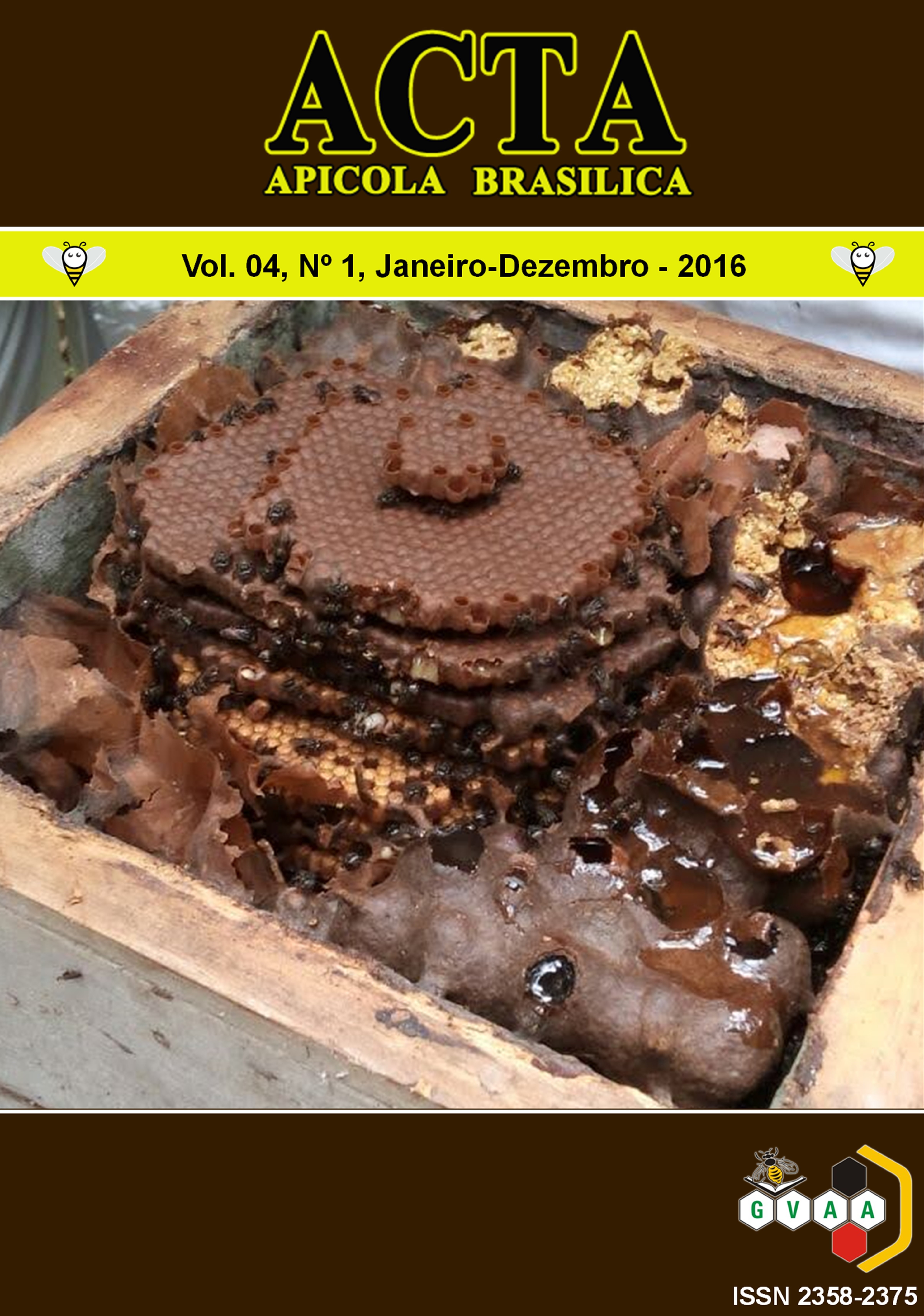The meliponicultura as a productive activity: An analysis in a maroon communitiesof Paraiba backlands
DOI:
https://doi.org/10.18378/aab.v4i1.4622Keywords:
native bees, maroon communities, income opportunityAbstract
In maroon communities, honey, wax and pollen, produced by native bees are widely used Having different purposes, which vary according to a local culture. The present study aims to show that beekeeping can constitute an opportunity to supplement income for the Maroons, city of Diamante, Paraíba state. The data collection was carried out from September to October 2015, at which time a previously elaborated questionnaire containing subjective questions was used. It was found that in relation to technical assistance by public bodies and encouragement for the practice of beekeeping, most participants who never received a visit from a technician to deal with the matter and that only a small portion already participated in a training about hygiene techniques in honey produced. Moreover, 85% of respondents believe that the main obstacle faced by them in relation to beekeeping concerns the lack of support and technical assistance; 15% added that beyond these obstacles, the lack of a proper flora in the region has also contributed to limiting the production of honey in the community.
Downloads
References
ALVES, R. R. N; NETA, R. O. S.; TROVÃO, D. M. B. M.; BARBOSA, J. E. L.; BARROS, A. T.; DIAS, T. L. Traditional uses of medicinal animals in the semi-arid region of northeastern Brazil. Ethnobiol Ethnomed, v. 8, n. 3, p 41-46, 2012.
ANDRADE, S. E. O.; MARACAJÁ P. B.; SILVA, R. A.; FREIRES, G. F.; PEREIRA, A. M. Estudo etnoveterinário de plantas medicinais na comunidade Várzea Comprida dos Oliveiras, Pombal, Paraíba, Brasil. Revista Verde de Agroecologia e Desenvolvimento Sustentável,v. 7, n. 2, p 193-198, abr-jun, 2012.
AQUINO, I. S. Abelhas Nativas da Paraíba. João Pessoa: Universitária /UFPB. 2006.
CARVALHO, R. M. A.; MARTINS. C. F.; MOURÃO, J. S. Meliponiculture in Quilombola communities of Ipiranga and Gurugi, Paraíba state, Brazil: an ethnoecological approach. Journal of Ethnobiology and Ethnomedicine, v. 10, n. 3, p. 1-12, 2014.
KERR, W. E.; CARVALHO, G. A.; NASCIMENTO, V. A. Abelha uruçu: Biologia, manejo e conservação. Belo Horizonte: Fundação Acangaú, 1996.
CPRM, Serviço Geológico do Brasil. Diagnóstico do município de Diamante, estado da Paraíba. (Projeto cadastro de fontes de abastecimento por água subterrânea). Recife: CPRM/PRODEEM, 2005.
PEGORARO, A.; ZILLER, S. R. Valor Apícola das Espécies Vegetais de duas Fases Sucessionais da Floresta Ombrófila Mista, em União da Vitória Paraná – Brasil. Boletim de Pesquisa Florestal, Colombo, n. 47, p. 69-82, 2003.
PEREIRA, C. D.; NETO, J. T.; BUSTAMANTE, N. C. R. et. al. O ensino da meliponicultura na Amazônia. Arq Mudi., v. 12, n. 2-3, p. 43-49, 2008.
PEREIRA, D. S. Distribuição geográfica de espécies de meponineos criados no Rio Grande Norte. 2006. Monografia (graduação em Agronomia). Universidade Federal Rural do Semiárido_ UFERSA. Mossoró.
PEREIRA, J. C.; VINCENZI, M. L.; LOVATO, P. E. Roland Ristow: uma contribuição ao estudo da agricultura sustentável. Eisforia, v. 1, n. 1, p. 63-97, 2003.
RODRIGUES, E. R. Conhecimento etnoentomológico sobre abelha indígena sem ferrão (Meliponina) e meliponicultura na comunidade de São Pedro dos Bois do estado do Amapá. Dissertação (Mestrado em Desenvolvimento Regional). Macapá: Universidade Federal do Amapá; 2009.













